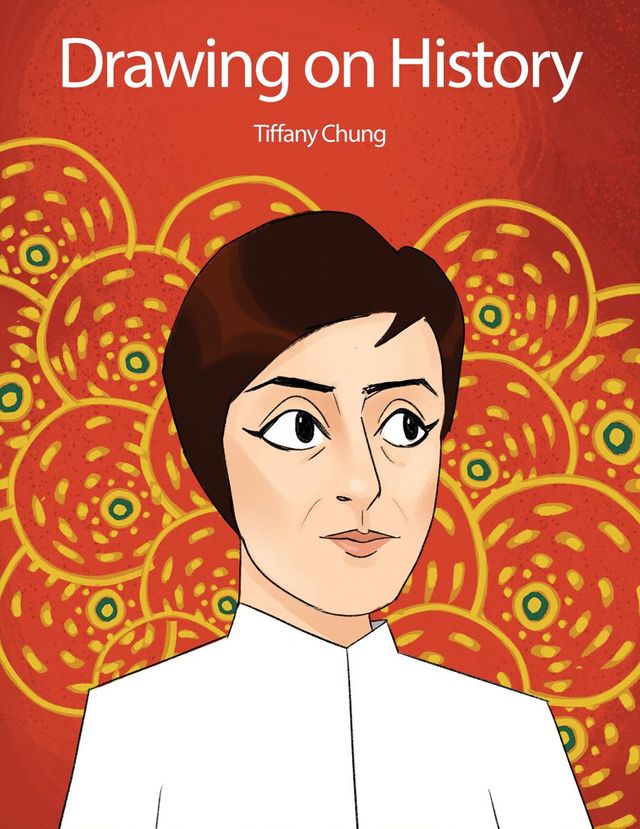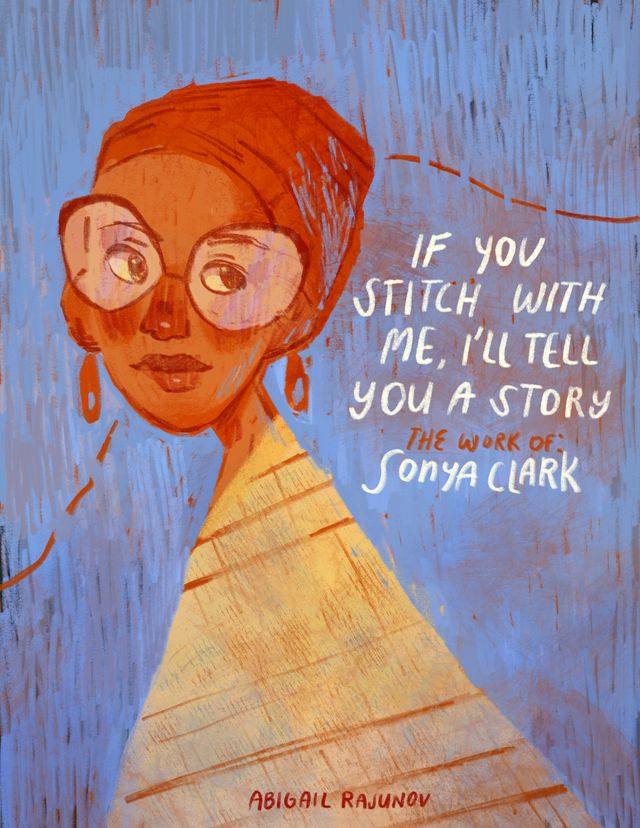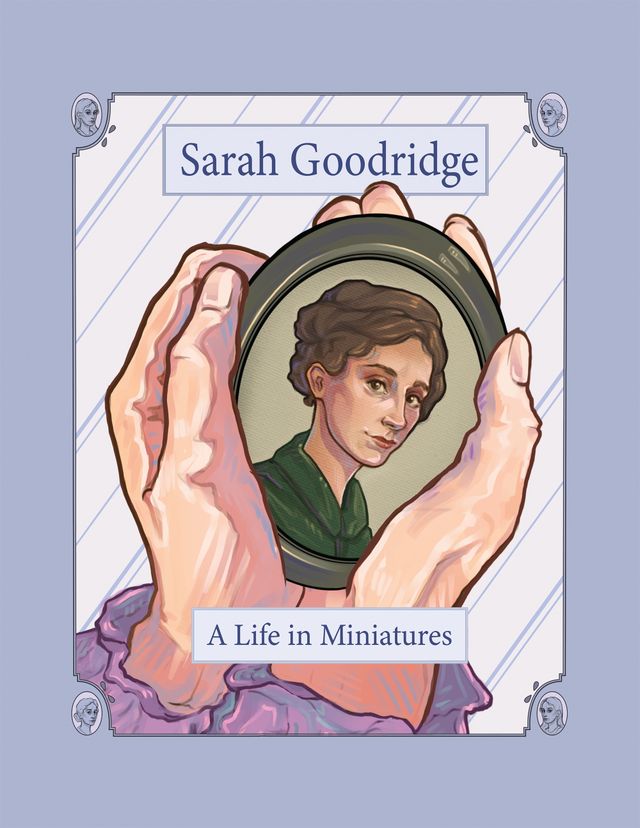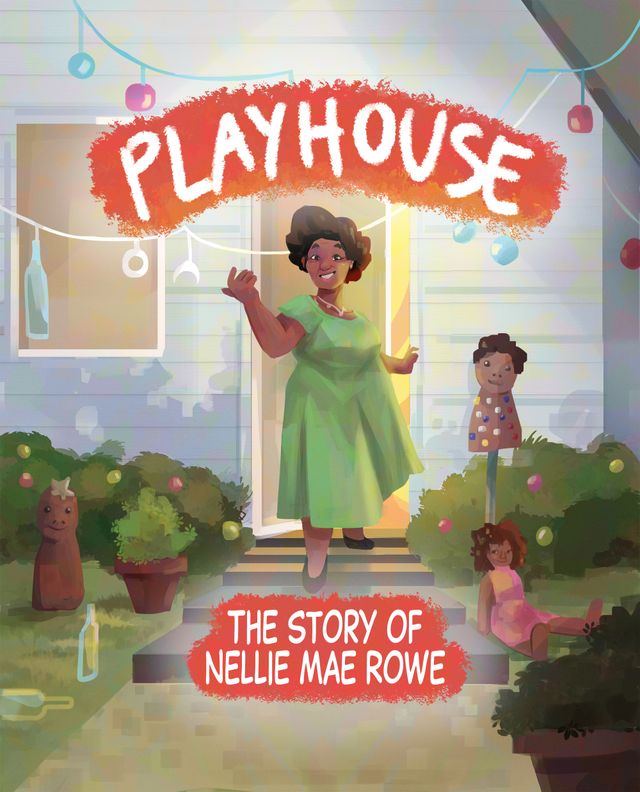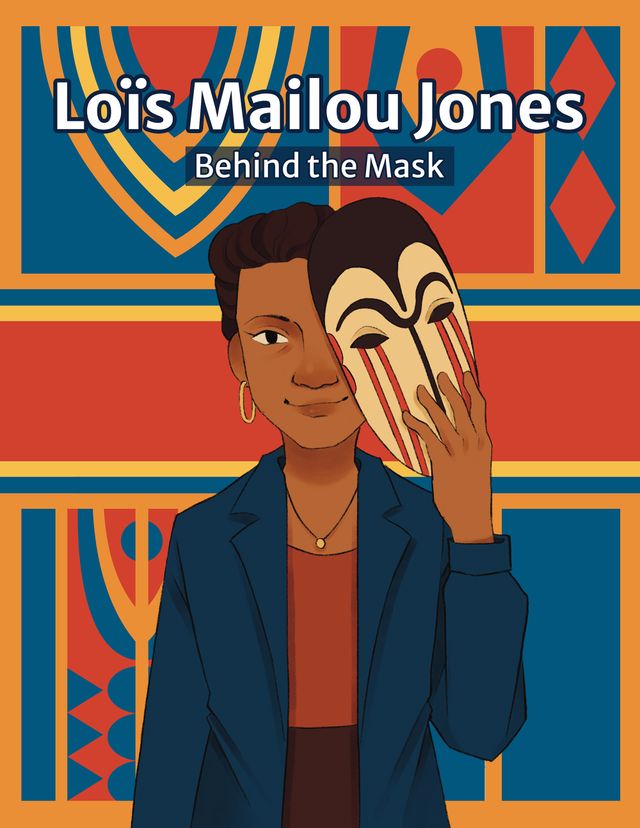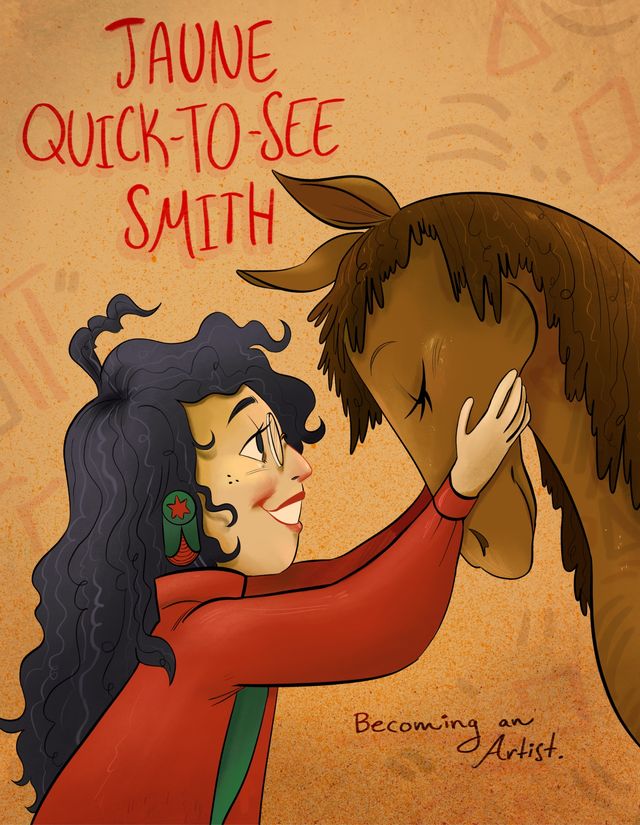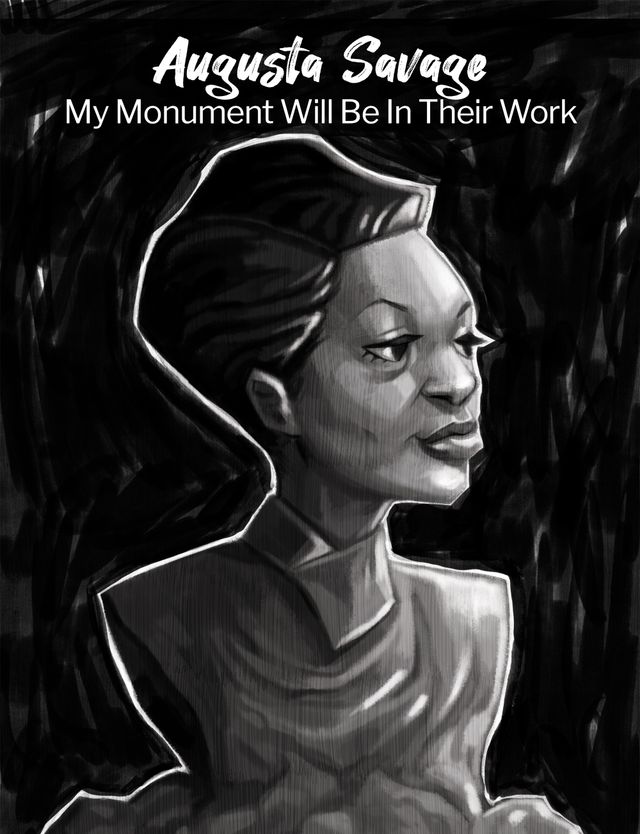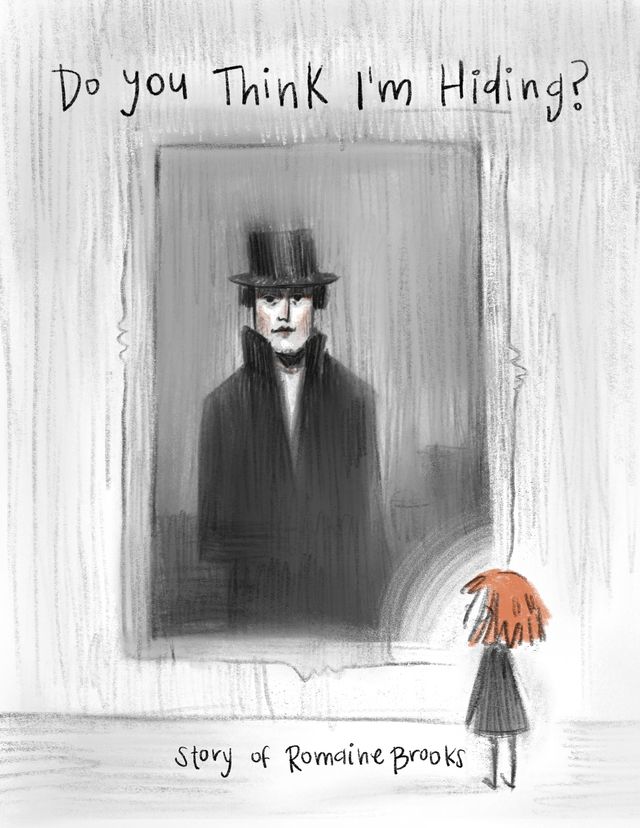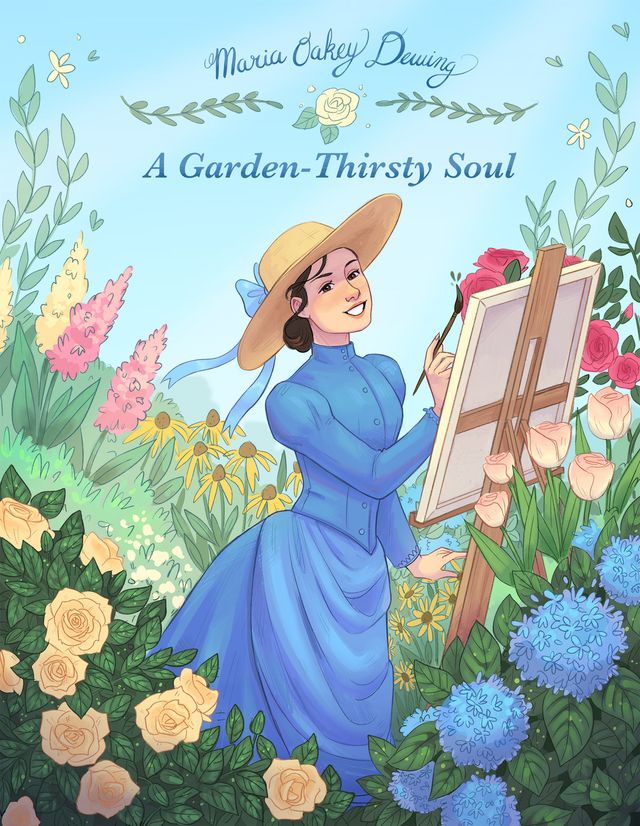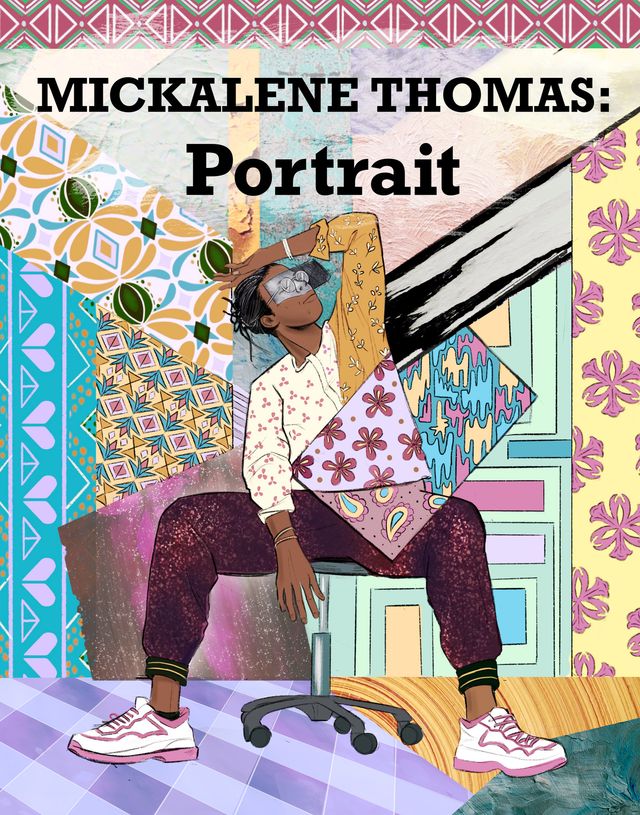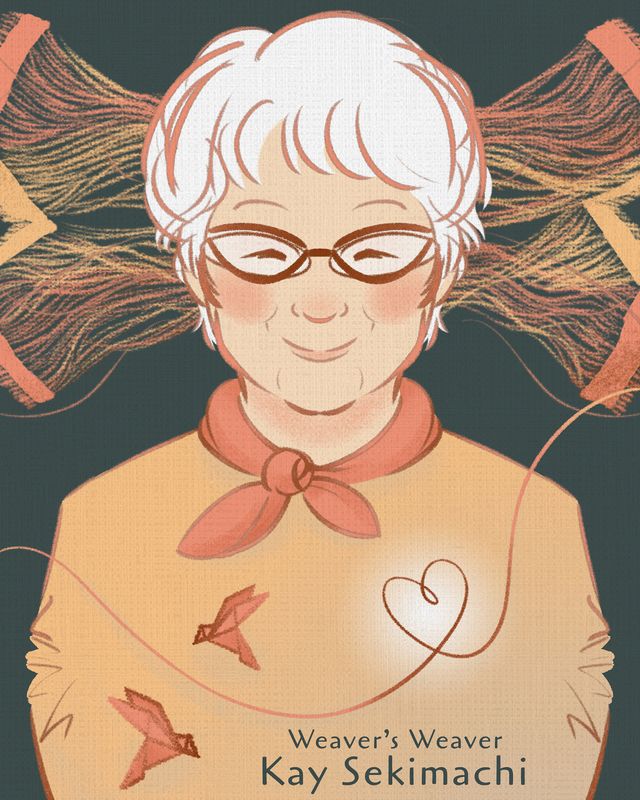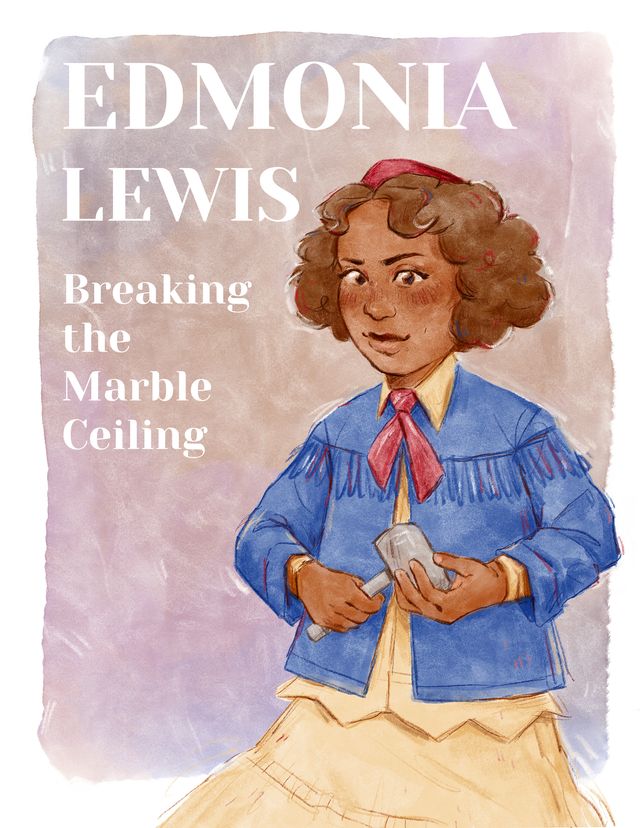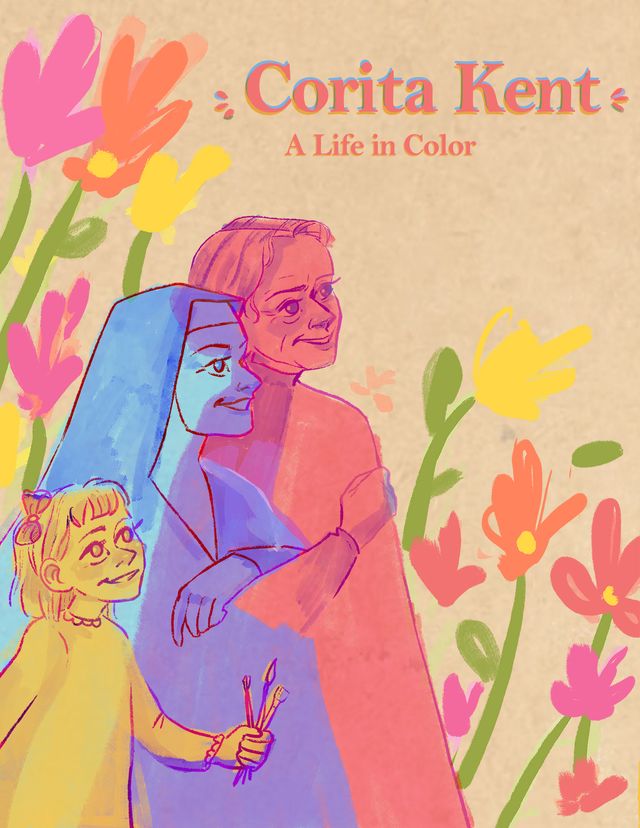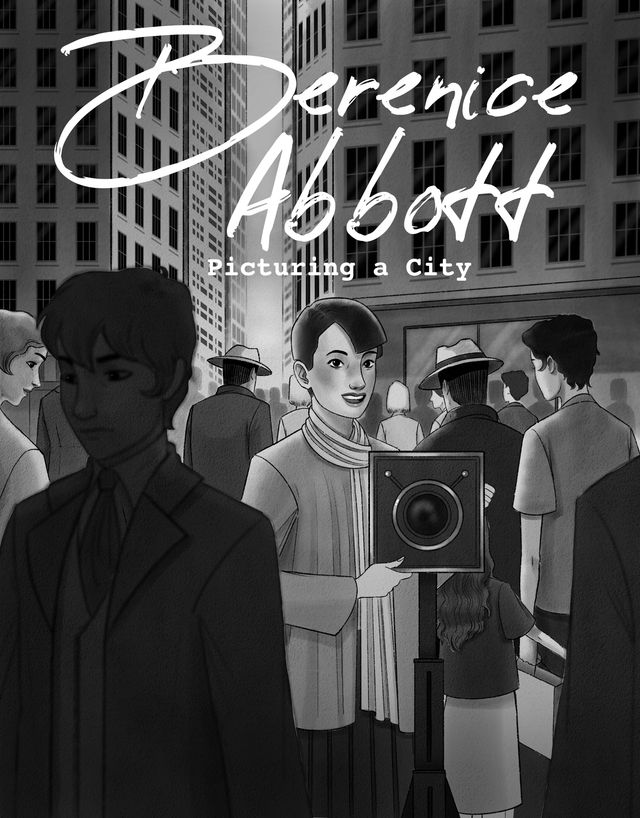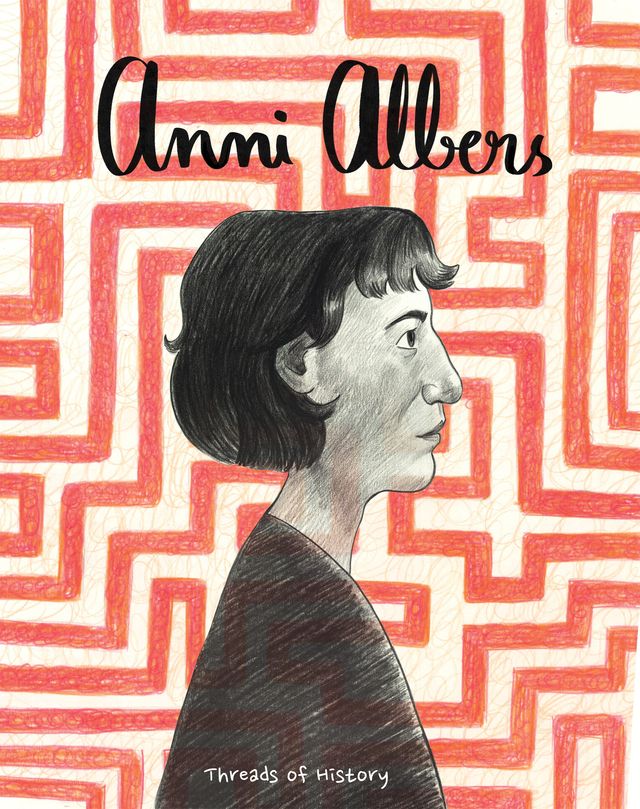This comic is part of a series Drawn to Art: Ten Tales of Inspiring Women Artists that illuminates the stories of ten women artists in the collection of the Smithsonian American Art Museum. Inspired by graphic novels, these short takes on artists’ lives were each drawn by a woman student-illustrator from the Ringling College of Art and Design.
Alma Thomas became the first woman to graduate from the art department at Howard University, as well as one of the first Black women to receive a degree in art. Her exuberant, colorful paintings explore the natural world around us, from garden to galaxy.

At the top of the page, a woman with brown hair in a bun and scoop necked blue dress is standing with her back to us, looking at a painting with pink and red dashes of paint in bands of bright color. Other colorful paintings sit propped on the floor beside her. On the lower part of the page, in front of the woman and facing us, is a young girl, about eight, in a white, long sleeve dress with a ruffle collar. The girl is running out of the frame, her face is towards us, looking back over her shoulder. She has curly chin length hair, brown eyes and brown skin. She has a bright, happy face, and is smiling, holding a paintbrush aloft with a swirl of bright red paint coming off the brush, framing both figures and the words "The Story of Alma Thomas: beneath the Holly Tree."
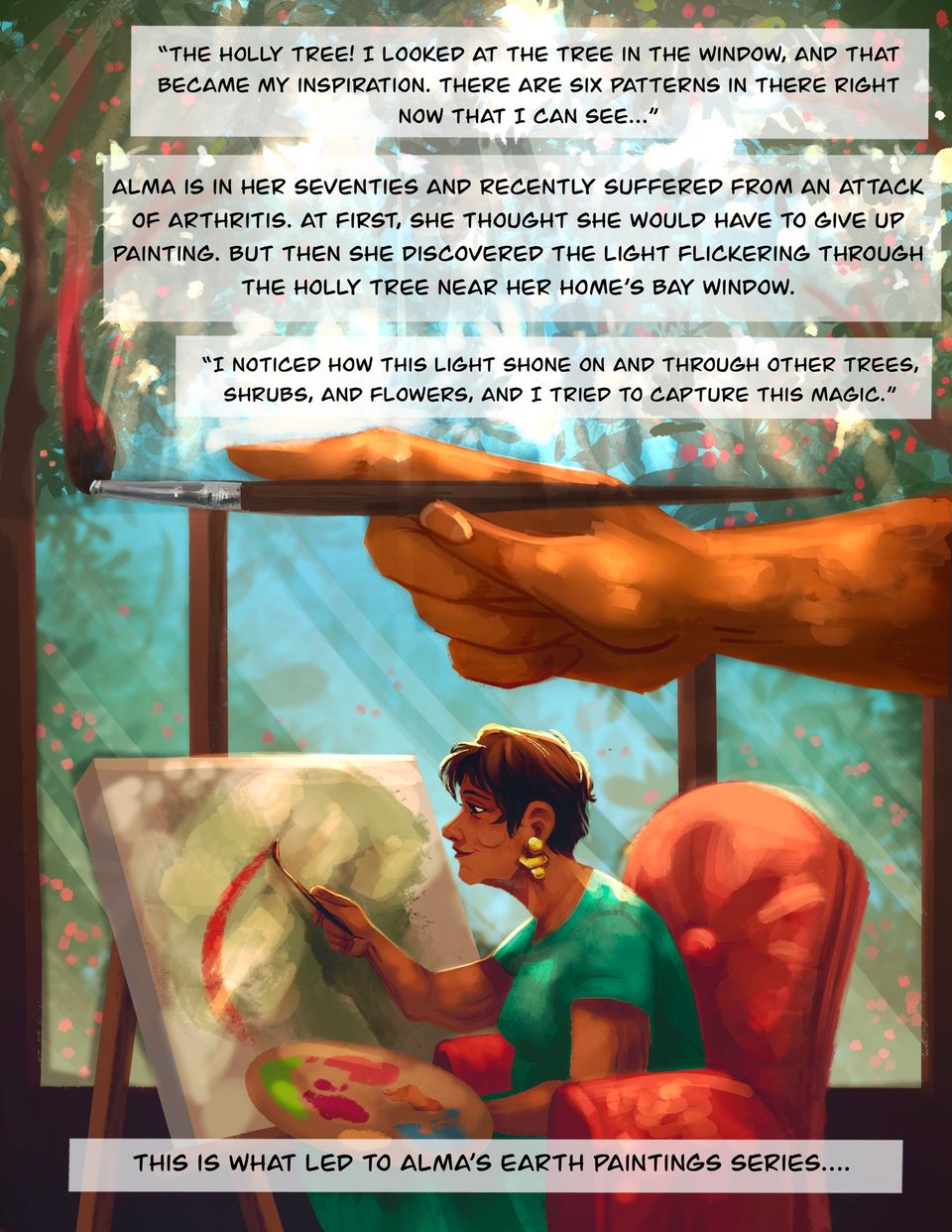
Panel One: At the bottom of the page, a woman with short brown hair and brown skin wearing chunky gold earrings and a green short sleeve dress sits in a red upholstered arm-chair next to a large window. She is holding a pointed artist’s paintbrush in one hand and a palette with splotches of colored paint in the other. Dappled light streams through the window and illuminates the canvas and easel in front of her. She is intent on the painting before her and softly smiling. She makes a sweeping gesture in bright red paint across the painting’s surface. Green branches with red berries outside the window echo the colors of Alma’s chair, dress, and the red swish on her painting. A close-up of a graceful hand, dappled in sunlight, holding a brush with a red sweep of color, hovers above the scene. Above the hand text, a quote from Alma Thomas, reads, “The holly tree! I looked at the tree in the window, and that became my inspiration. There are six patterns in there right now that I can see ...
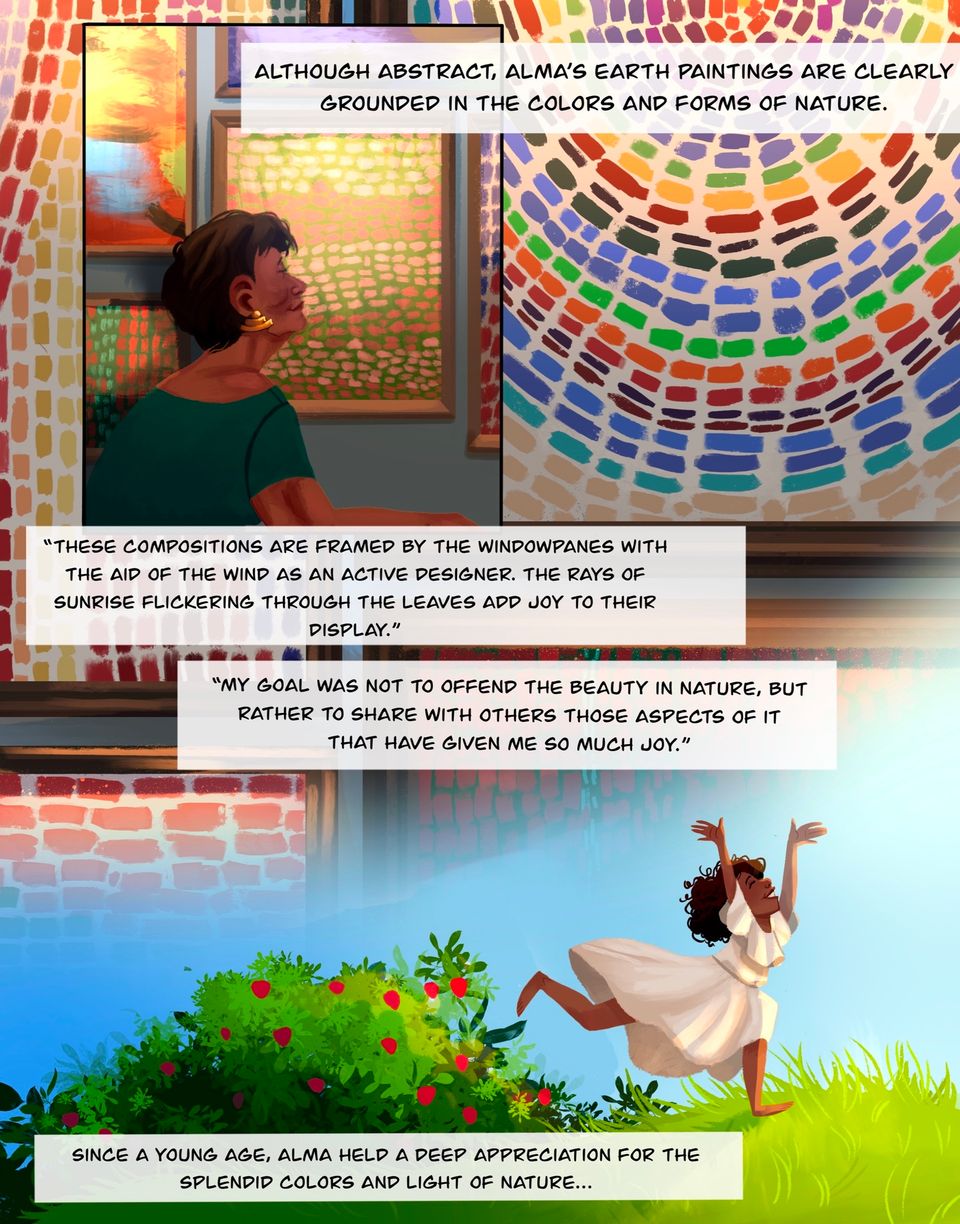
Panel one: At the top left of the page, Alma Thomas is now a dignified older woman with short hair wearing a green dress and gold earrings. She stands in profile, her eyes lowered, a soft smile on her face and her chin raised as she stands in front of a wall filled with her framed paintings. They are full of bright colors and rectangular brushstrokes, like dappled light through trees or on water. Text reads, “Although abstract, Alma’s earth paintings are clearly grounded in the colors and forms of nature.”
Panel two: a scene runs under and around the first panel and includes a close-up of the paintings on the wall. We can examine the rainbow of color and energy of the brushstrokes more closely. Text reads, "These compositions are framed by the windowpanes with the aid of the wind as an active designer. The rays of sunrise flickering through the leaves add joy to their display”. “My goal was not to offend the beauty of nature, but rather to share with others those aspects of it that have given me so much joy.”
Pannel three fades into the sky of panel three below it, which stretches across the bottom third of the page. Alma is a young girl, in a white dress, running barefoot through the grass. Her arms are above her head and a wide smile is on her face. She is in profile like the panel of the older Alma illustrated above her. There is greenery and a red rose bush behind her. Text reads, “Since a young age, Alma held a deep appreciation for the splendid colors and light of nature...”
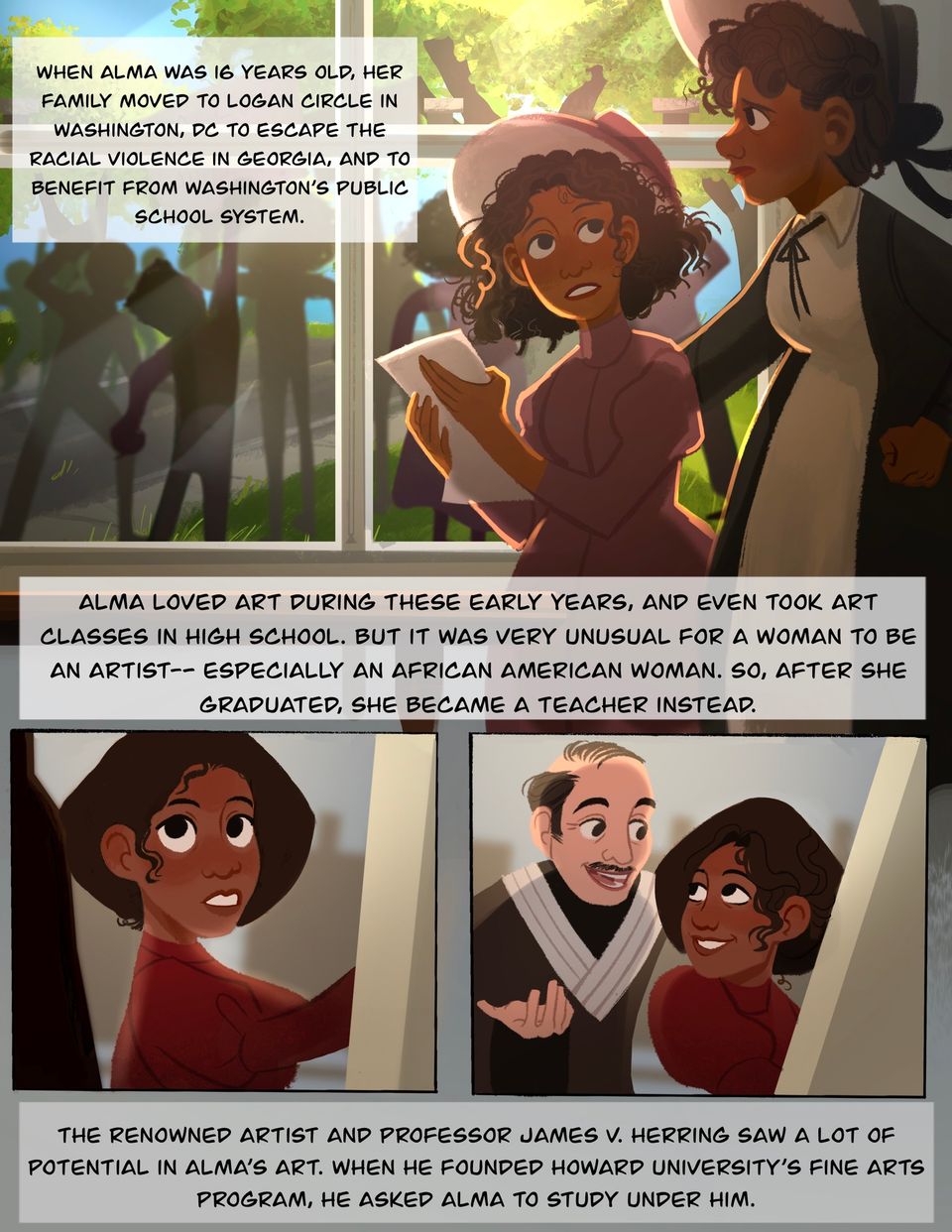
Panel one stretches across the top half of the page. A teenaged Alma stands in front of a window, her face in shadow below a broad-brimmed bonnet, high necked mauve dress with long sleeves. She is holding a white paper in front of her. An older woman stands next to her in profile, a look of determination on her face, also wearing a broad-brimmed bonnet and a long sleeve white and gray dress with a pointed collar. Her arm is around Alma’s shoulders. Alma looks up at the woman, a look of concern on her face. Outside the window by the street are blurry, half-shadowed figures with arms raised in anger. Text reads, “When Alma was 16 years old, her family moved to Logan Circle in Washington, D.C. to escape the racial violence in Georgia, and to benefit from Washington's public school system. Alma loved art during these early years and even took art classes in high school. But it was very unusual for a woman to be an artist -- especially an African American woman. So, after she graduated, she became a teacher instead.” Panel two: Alma as a young woman, sitting in front of a canvas. Behind her, a window frames a faint cityscape. Her hair is up in a loose bun, and she is wearing a high neck, burgundy dress. Her armed is raised to the canvas and she is looks up at the figure in front of her. Panel three: The figure is an older man with thinning hair and a mustache, wearing a dark V-neck sweater. His hand is up, gesturing animatedly as he smiles and looks at Alma’s canvas. Alma looks over her shoulder at the man, smiling in return. Text reads, “The renowned artist and professor James V. Herring saw a lot of potential in Alma’s art. When he founded Howard University's Fine Arts program, he asked Alma to study under him.”
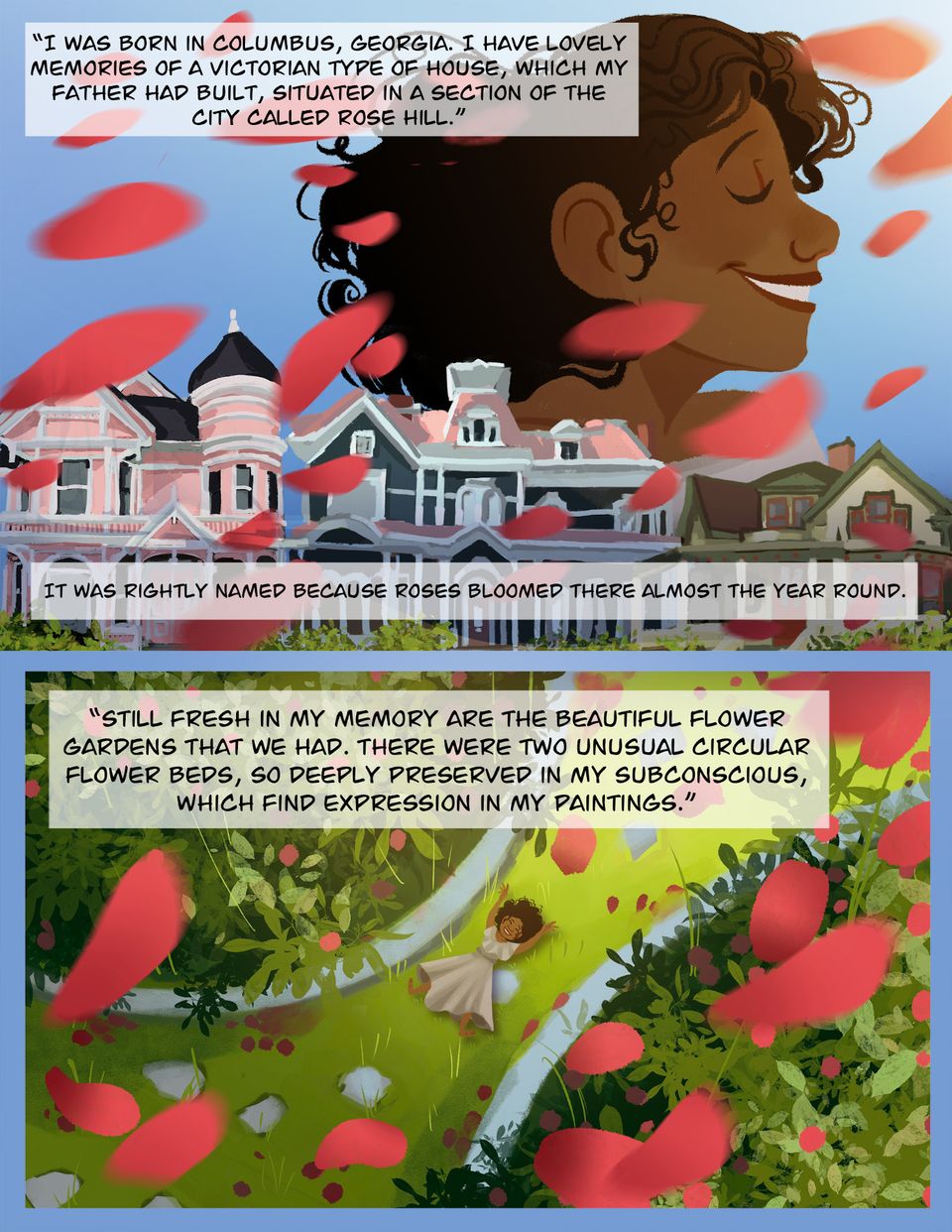
Panel one: A closeup of Alma as a young girl, her head in profile against a bright blue sky. She has her eyes closed as her shoulder length curly brown hair blows back from her face. She has brown skin, pink cheeks, long eyelashes, and has a wide smile. Below her is a row of beautiful Victorian homes, painted pink, white, gray, and olive green with turrets, gables, and painted trim. A shower of red flower petals floats through the air and blue sky, blurred as if they are moving quickly through the space. Text reads, “I was born in Columbia, Georgia. I have lovely memories of a Victorian type of house, which my father had built, situated in a section of the city called Rose Hill. It was rightly named because roses bloomed there almost the year round.” Panel two: from above at Alma as a young girl lying in the grass. She is in a white dress; her arms are stretched above her head and her hair is spread out around her. She is lying in a grassy path between two flower beds full of pink roses, separated from the path by a curved white border. The garden is full of sunlight. There are scattered white stones embedded in the grass path around her. A shower of red flower petals floats through the air. Text reads, “Still fresh in my memory are the beautiful flower gardens that we had. There were two unusual circular flower beds, so deeply preserved in my subconscious, which find expression in my paintings.”
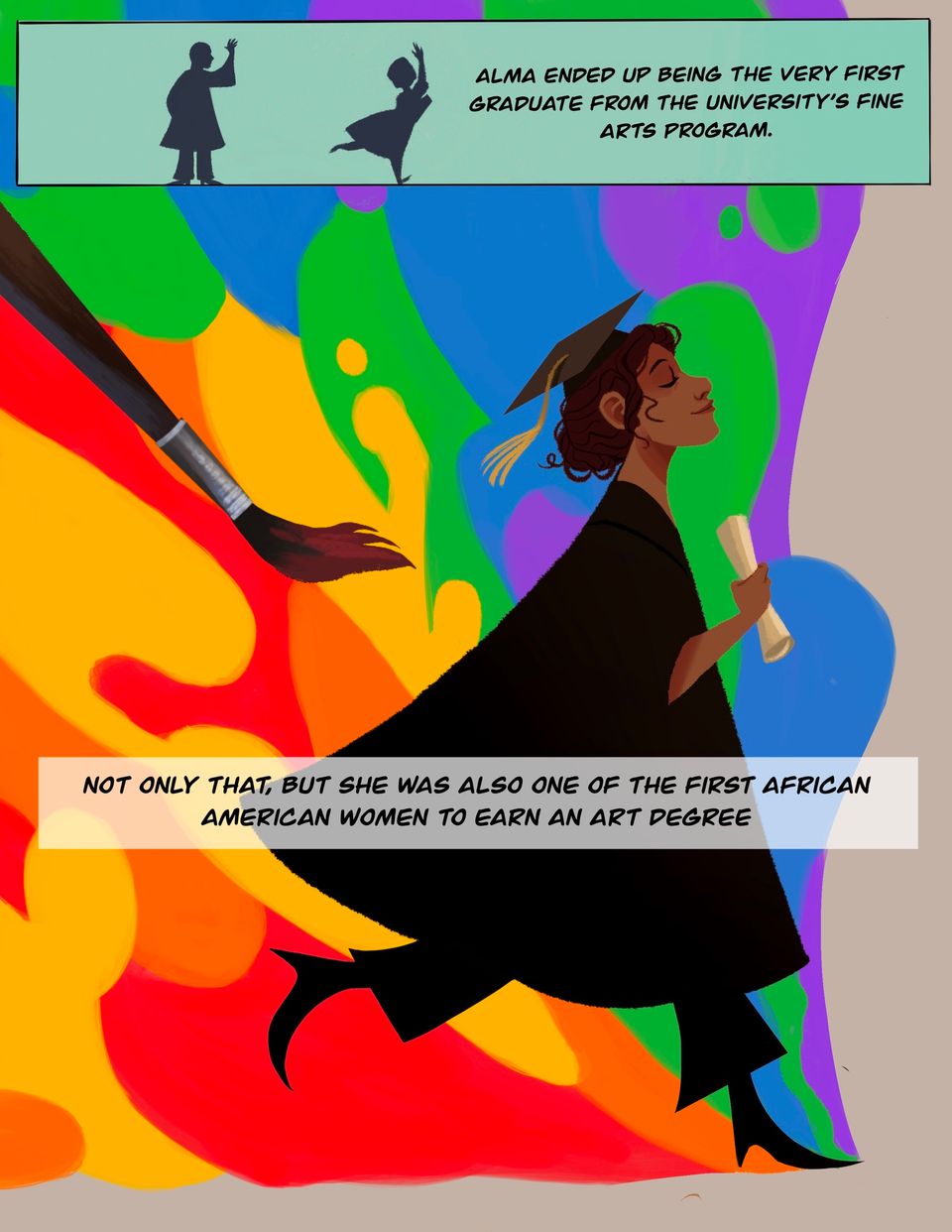
Panel one: Across the top of the page, two small figures are silhouetted in black on a light green background. The first, a man in a robe with a raised hand, the second, a woman, also in a robe, walking away from the first figure with one arm raised in return. Text reads, “Alma ended up being the very first graduate from the university's fine arts program.” Panel two: Alma Thomas is drawn full length in profile, her figure taking up most of the page. She wears a black graduation cap and gown, with a rolled diploma in her hand. Her eyes are closed, her chin held high, and has a look of triumph on her face. As she steps forward into her future a pattern of rainbow colors fills the space behind her on the page. On the left is a large paint brush in the swirl of color. Text reads, “Not only that but she was also one of the first African American woman to earn an art degree.”
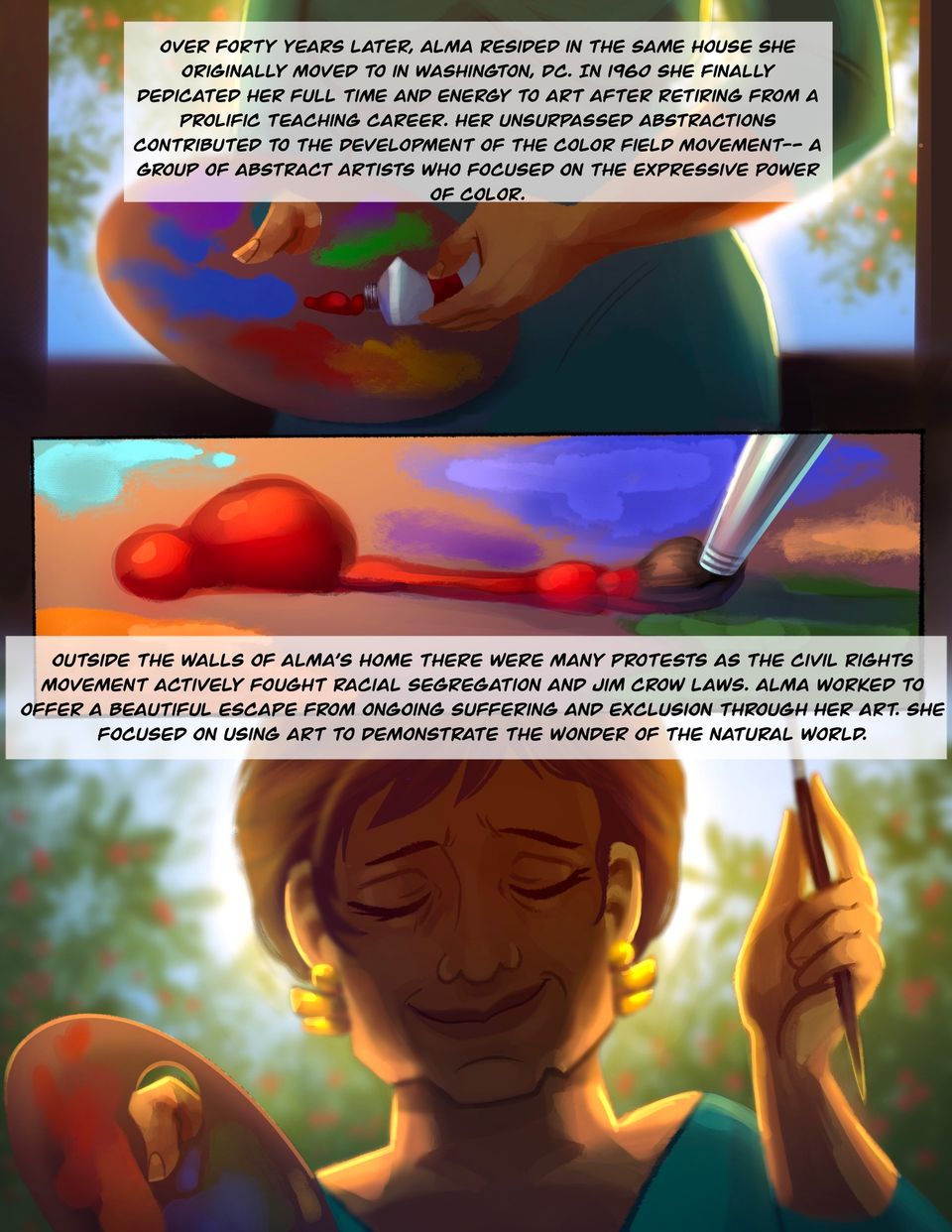
Panel one: Across the top of the page, a close-up of Alma's arms and hands as she holds a palette in one hand and squeezes a tube of red paint onto it with the other, the red joins an array of other colors on the paint palette. She stands partially silhouetted, her figure blurred by a halo of bright light coming from the window behind her. Through the window, blurred by the glass, green branches of a tree with red specks grow against a blue sky. Text reads, “Over forty years later, Alma resided in the same house she originally moved to in Washington D.C. In 1960 she finally dedicated her full time and energy to art after retiring from a prolific teaching career. Her unsurpassed abstractions contributed to the development of the color field movement-- a group of abstract artists who focused on the expressive power of color.” Panel two: A close-up of an artist’s paintbrush showing the bristles and ferrule (the metal portion of the brush), as it trails through a blob of bright red paint on the palette stretches across the middle of the page. The palette has splotches of purple, teal, orange and other bright paint colors. Panel three: A close-up of Alma’s face and hands takes up the bottom of the page. She is older, with short brown hair, wearing chunky gold earrings and a green dress. Her eyes are closed, and she is smiling softly. She holds an artist’s paintbrush raised in one hand, and a palette raised in the other. Behind her through the window are blurred green tree branches with red berries. She is partially silhouetted and haloed by golden light coming through the window and through the branches of the holly trees in her garden. Text reads, “Outside the walls of Alma’s home there were many protests as the civil rights movement actively fought racial segregation and Jim Crow laws. Alma worked to offer a beautiful escape from ongoing suffering and exclusion through her art. She focused on using art to demonstrate the wonder of the natural world.”
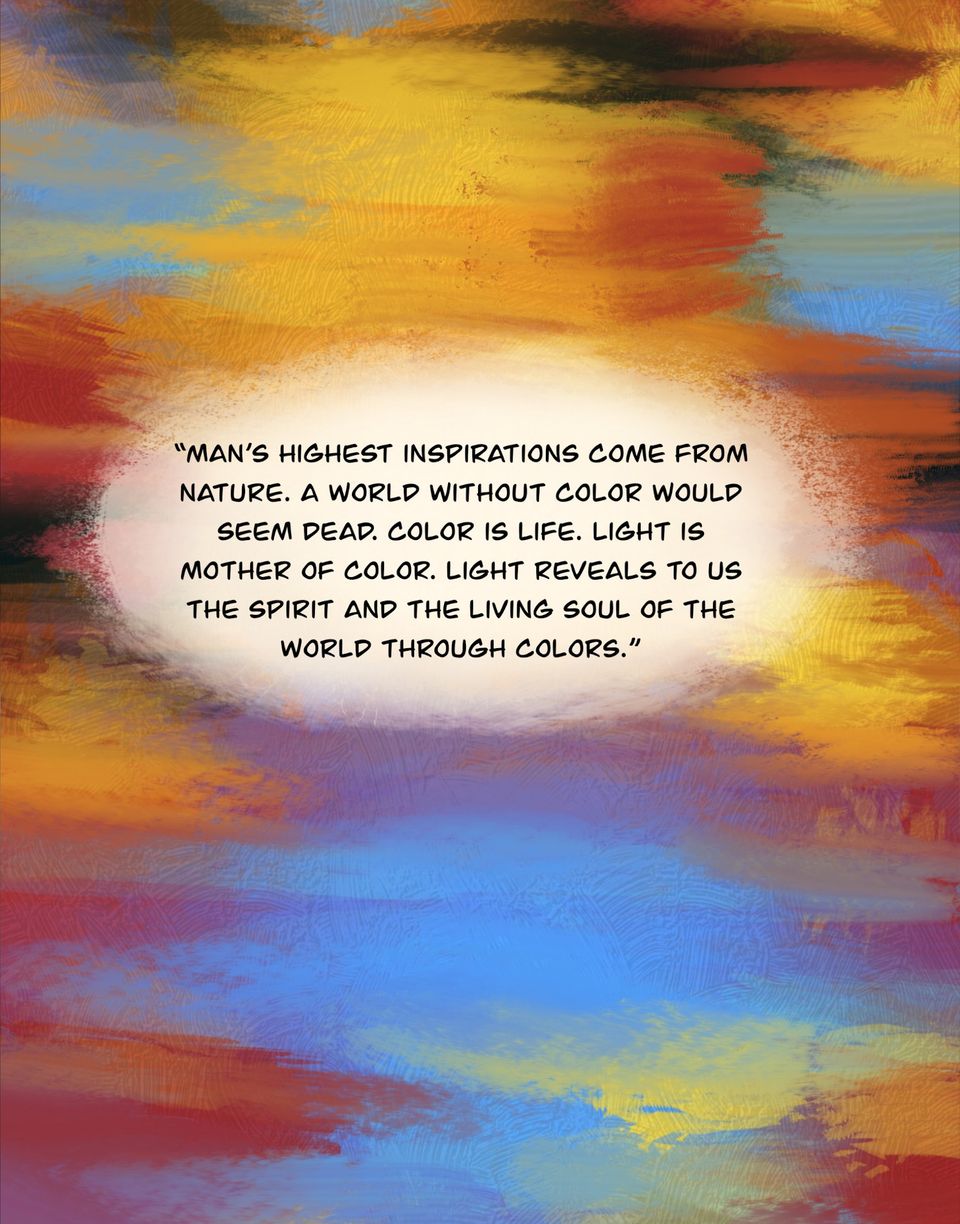
An abstract painted canvas with defined brushstrokes and swaths of overlapping bright colors. In the center of the image inside a pale painted oval, is a quote, “Man’s highest inspirations comes from nature. A world without color would seem dead. Color is life. Light is mother of color. Light reveals to us the spirit and the living soul of the world through colors.”
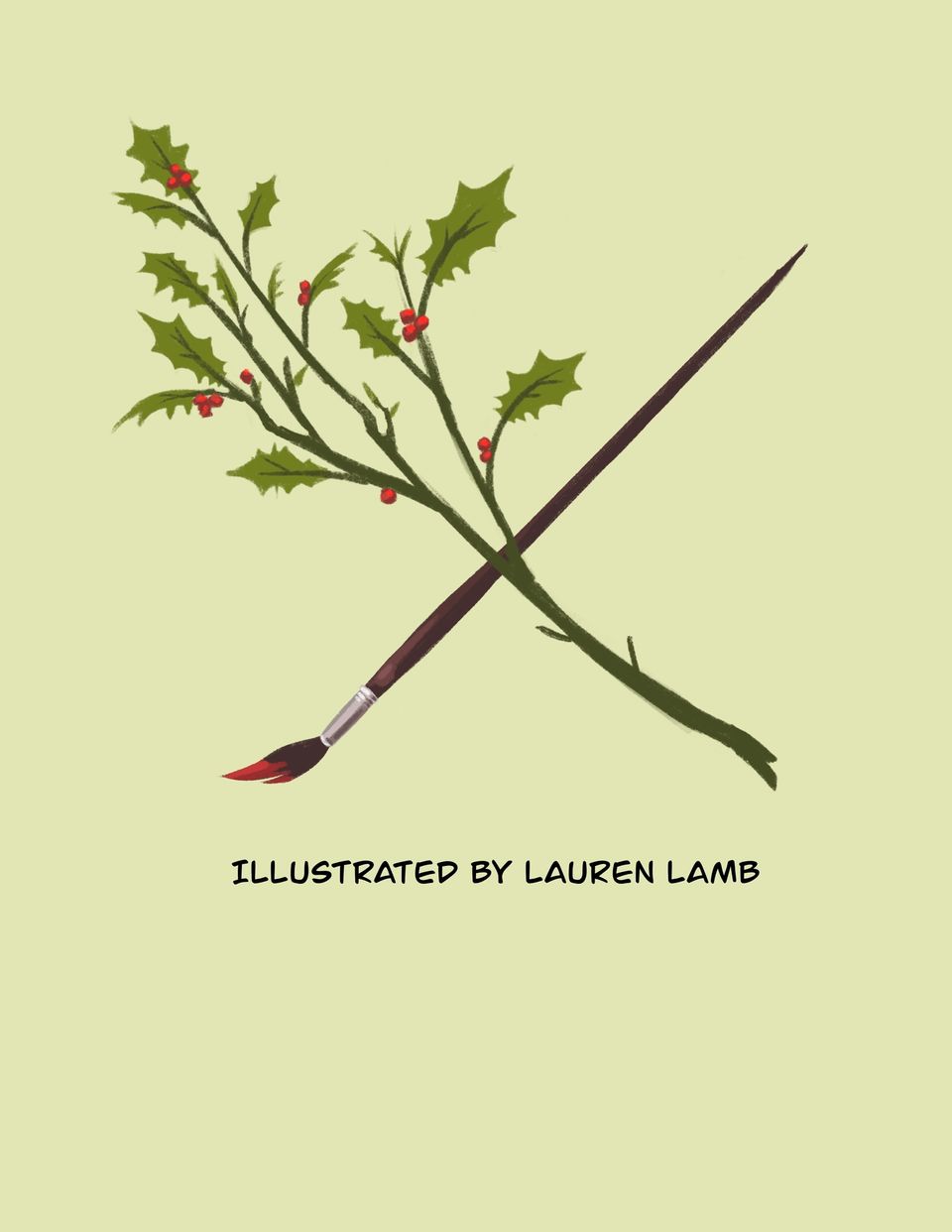
A branch of holly with spiked green leaves and red berries crosses a pointed paintbrush with a tip of red paint. They form an x on the page in a light green background. Below are the words, “Illustrated by Lauren Lamb” and “Written by Allison Carey”














